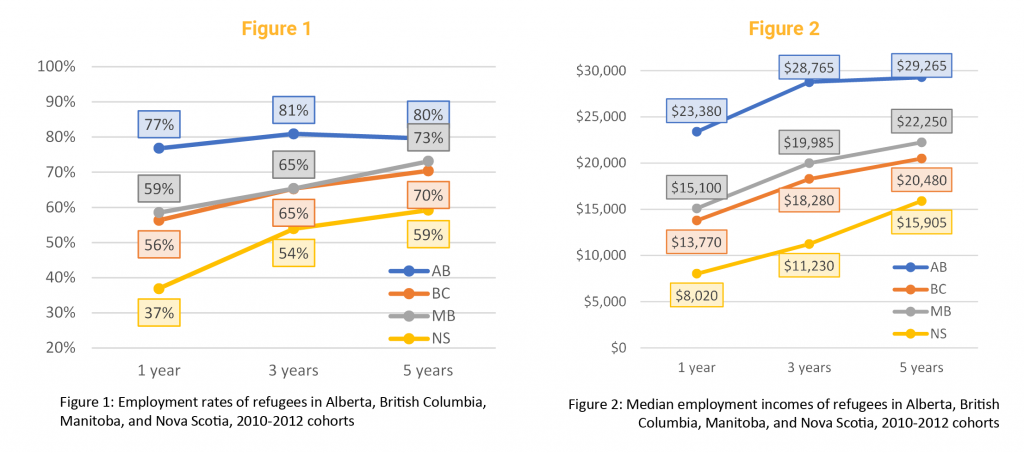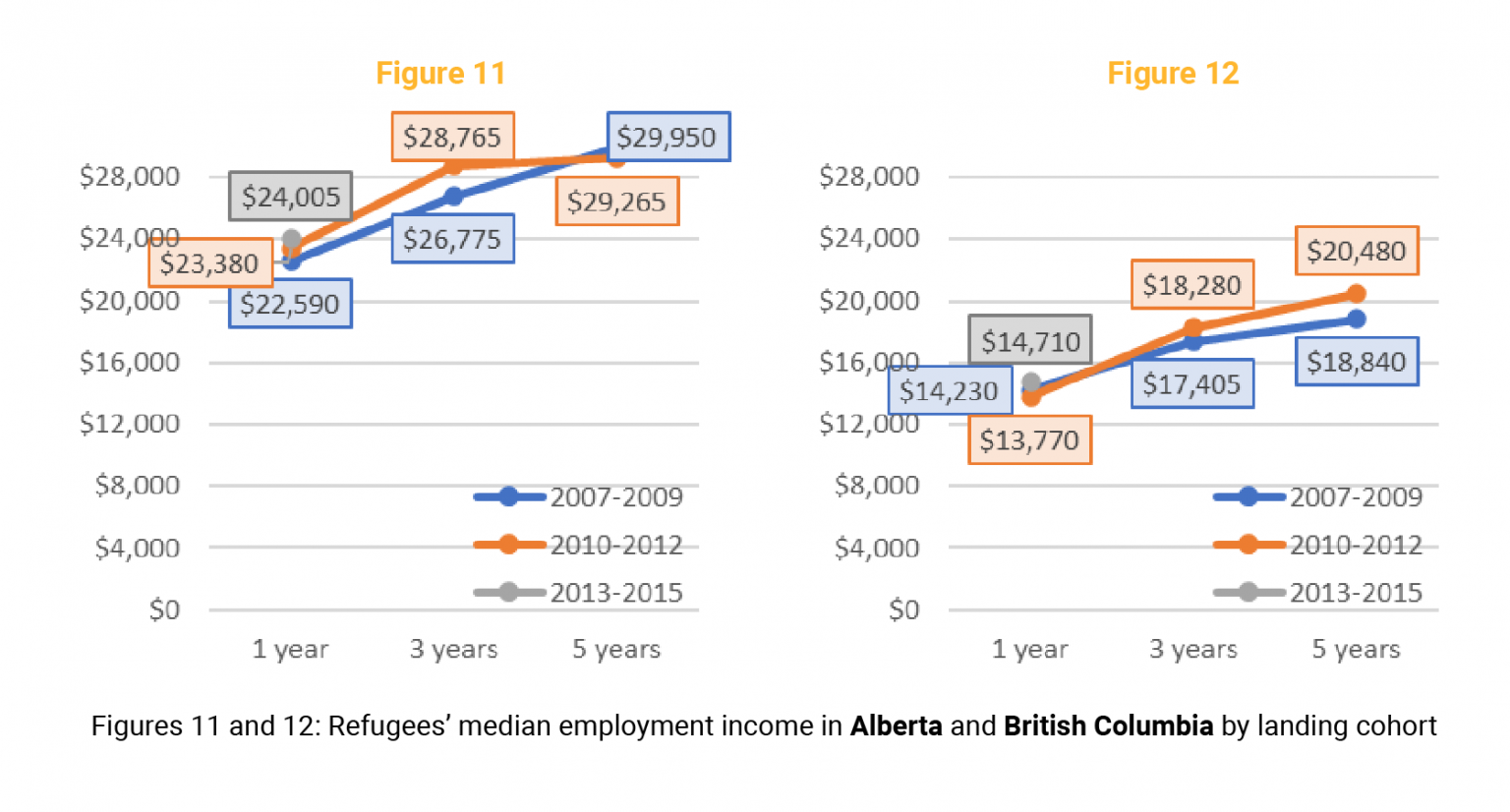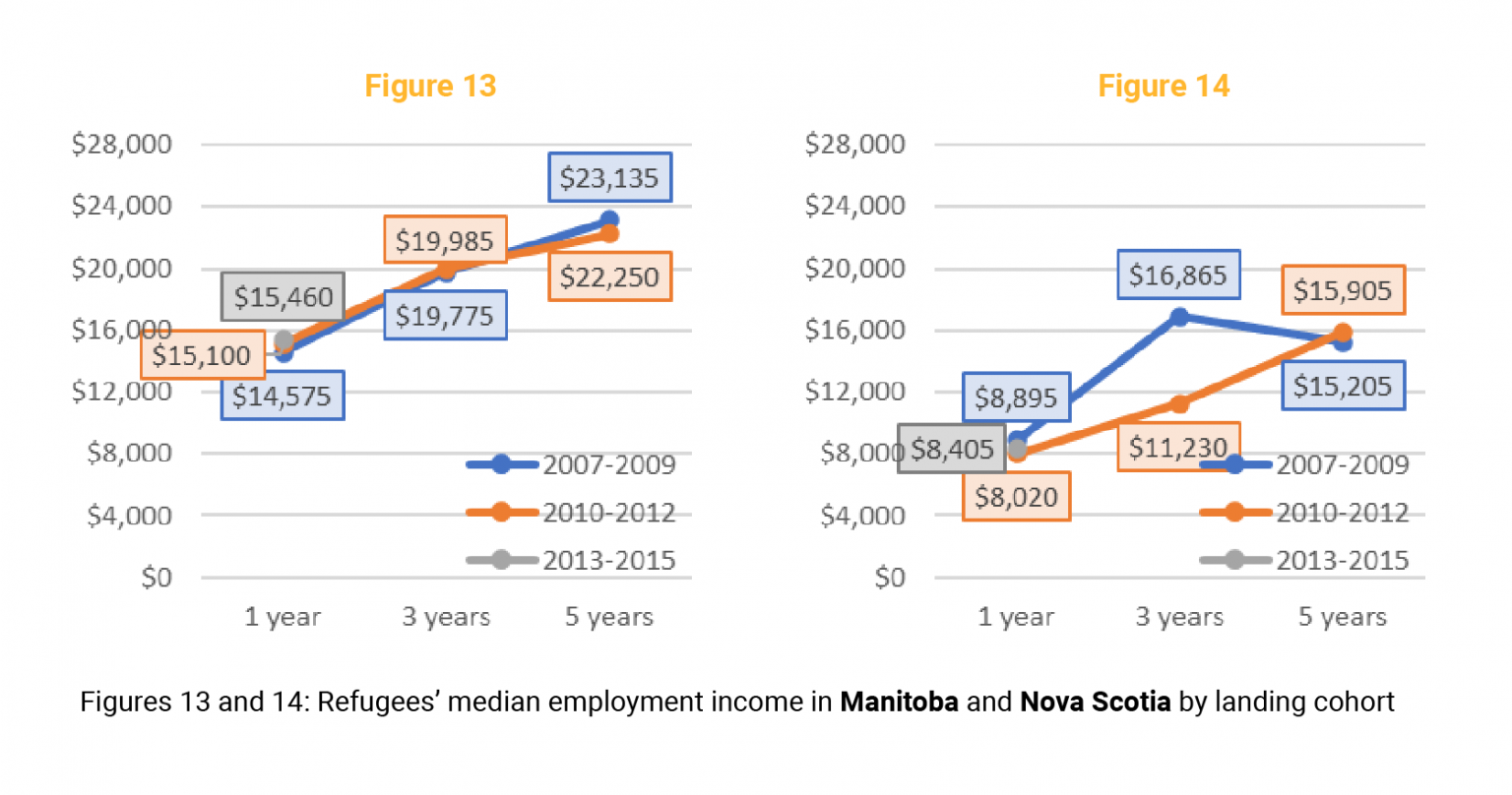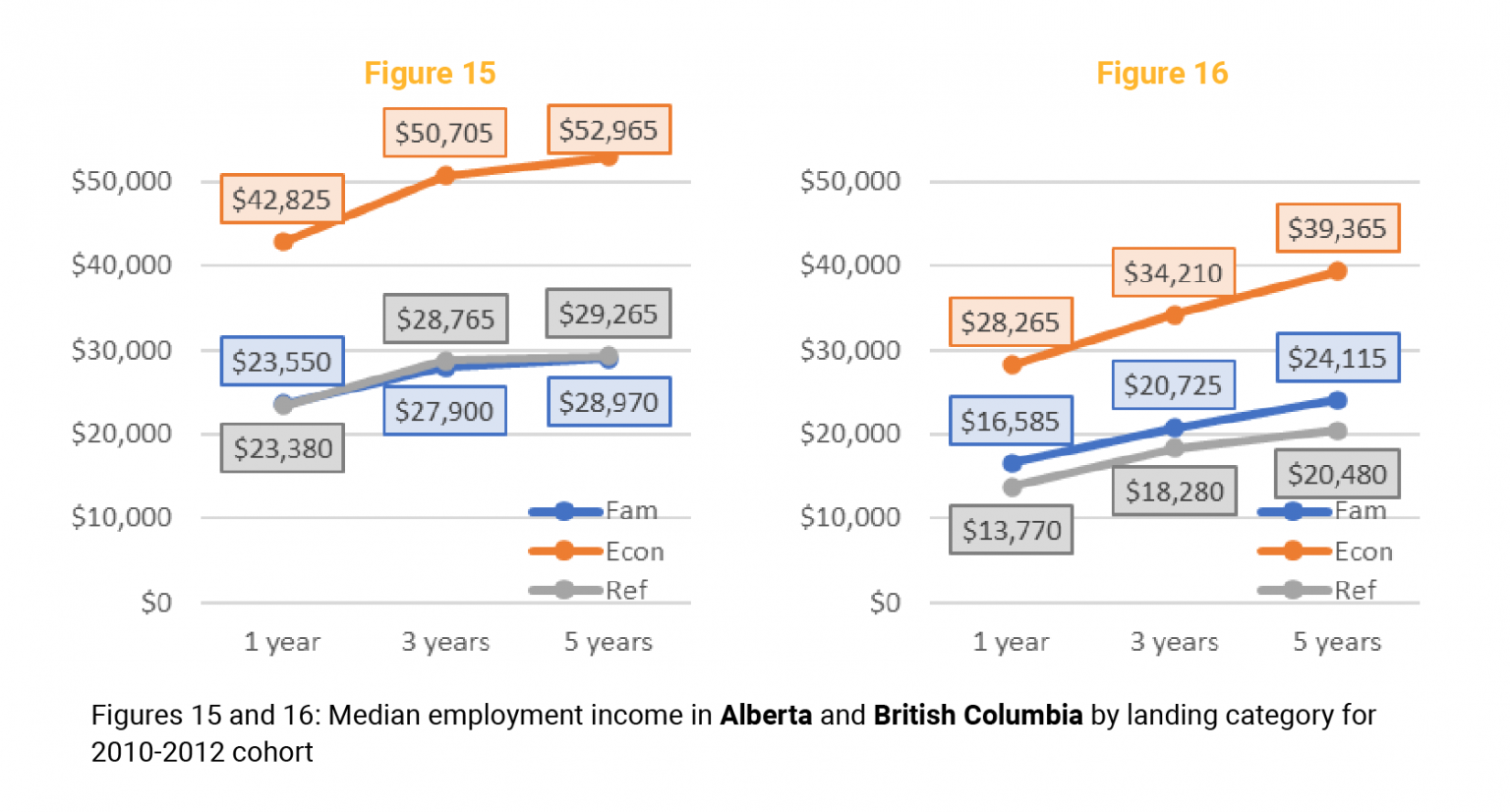Employment Rate and Median Income
Researchers: Yoko Yoshida1, Jonathan Amoyaw2, and Rachel McLay1
Affiliation: Dalhousie University1 and the University of Saskatchewan2
Keywords: Economic outcomes, employment rate, median employment income, refugees, immigrants, landing category, Alberta, British Columbia, Manitoba, Nova Scotia, IMDB
Go To: Findings, Graphs
Summary
Economic outcomes, such as employment rate and median employment income, are crucial metrics for understanding the settlement experiences of refugees in Canada. For working age immigrants, finding a job and earning a decent wage are necessary—not only for financial stability but also for social integration, happiness, and well-being.
Using data from the 2016 Longitudinal Immigrant Database (IMDB), which combines information from immigrants’ landing records with their tax files, it is possible to study the employment outcomes of refugees over time. In this report, we look at the employment rates and median employment incomes of refugees in Nova Scotia, Manitoba, Alberta, and British Columbia for three landing cohorts: 2007-2009, 2010-2012, and 2013-2015. Figures are generated from IMDB data that has been made publicly available by Statistics Canada (STC). This report provides an example of what can be learned through the creation of customized tables using the tools and interactive applications provided on Statistics Canada’s website, found at the following link: https://bit.ly/2BQAytU (This interactive visualization tool provides a useful way of customizing mobility statistics to meet researchers’ needs and interests).
Findings
Employment Rates by Province:
- Alberta consistently shows the highest employment rates for all cohorts. After 1 year, 77% of those who arrived in the 2010-2012 cohort were earning employment income.
- Employment rates for refugees are lowest in Nova Scotia, where only 37% of those who landed in 2010-2012 had earned employment income after 1 year. After 5 years in the province, this figure increased to 59%.
Employment Rates of Refugees Compared to Other Immigrants
- Across all provinces, economic immigrants had the highest employment rates.
- In Alberta, for the 2010-2012 cohort, refugees found employment at a higher rate than family class immigrants, with 80% earning an income after 5 years compared to 74% of family class immigrants.
- In B.C., the employment rate after 1 year is much lower for refugees than other landing categories, but it increases over time, nearly catching up with the family class after 5 years: 70% of refugees earned employment income, compared to 72% of family class immigrants. Manitoba showed a similar trend.
- The employment rate of refugees in Nova Scotia is the lowest at 1 year after landing; while the proportion of refugees in Nova Scotia finding employment does increase over time, the rate remains relatively low after 5 years for the 2010-2012 cohort: only 59% compared to 72% of family class immigrants.
Median Income by Province over Time
- Median employment incomes are highest for refugees in Alberta compared to the other provinces, and they increase over time from about $23,000 after 1 year to nearly $30,000 after 5 years.
- In Manitoba, the median income of refugees increased by a greater percentage over time than Alberta and B.C.. The median income of workers in the 2007-2009 cohort increased by 59% from $14,575 to $23,135. In Alberta and B.C., for the same cohort, median income increased by 33% and 32% respectively.
- The median income for refugees in Nova Scotia is much lower than for those in other provinces, however, for the 2010-2012 cohort, median income nearly doubled from 1 year to 5 years after landing, from $8,020 to $15,905.
Median Income of Refugees Compared to Other Immigrants
- In Alberta, the 2010-2012 cohort earned about the same as family class immigrants, reaching about $29,000 after 5 years.
- In B.C. refugees earned a median employment income of $20,480 after 5 years—about $3,600 less than family class immigrants in the province and little more than half what economic immigrants earned.
- In Manitoba, trends are similar to those from B.C., but median income figures are higher for both refugees and family class immigrants.
- Nova Scotia shows the largest earning gap between economic immigrants and refugees.
Graphs
Figure 1: Employment rates of refugees in Alberta, British Columbia, Manitoba, and Nova Scotia, 2010-2012 cohorts. View Figure
Figure 2: Median employment incomes of refugees in Alberta, British Columbia, Manitoba, and Nova Scotia, 2010-2012 cohorts. View Figure
Figure 3 & 4: Refugees’ employment rates in Alberta and British Columbia by landing cohort. View Figures
Figure 5 & 6: Refugees’ employment rates in Manitoba and Nova Scotia by landing cohort. View Figures
Figure 7 & 8: Employment rates in Alberta and British Columbia by landing category for 2010-2012 cohort. View Figures
Figure 9 & 10: Employment rates in Manitoba and Nova Scotia by landing category for 2010-2012 cohort. View Figures
Figure 11 & 12: Refugees’ median employment income in Alberta and British Columbia by landing cohort. View Figures
Figure 13 & 14: Refugees’ median employment income in Manitoba and Nova Scotia by landing cohort. View Figures
Figure 15 & 16: Median employment income in Alberta and British Columbia by landing category for 2010-2012 cohort. View Figures
Figure 17 & 18: Median employment income in Manitoba and Nova Scotia by landing category for 2010-2012 cohort. View Figures









Explore more projects
